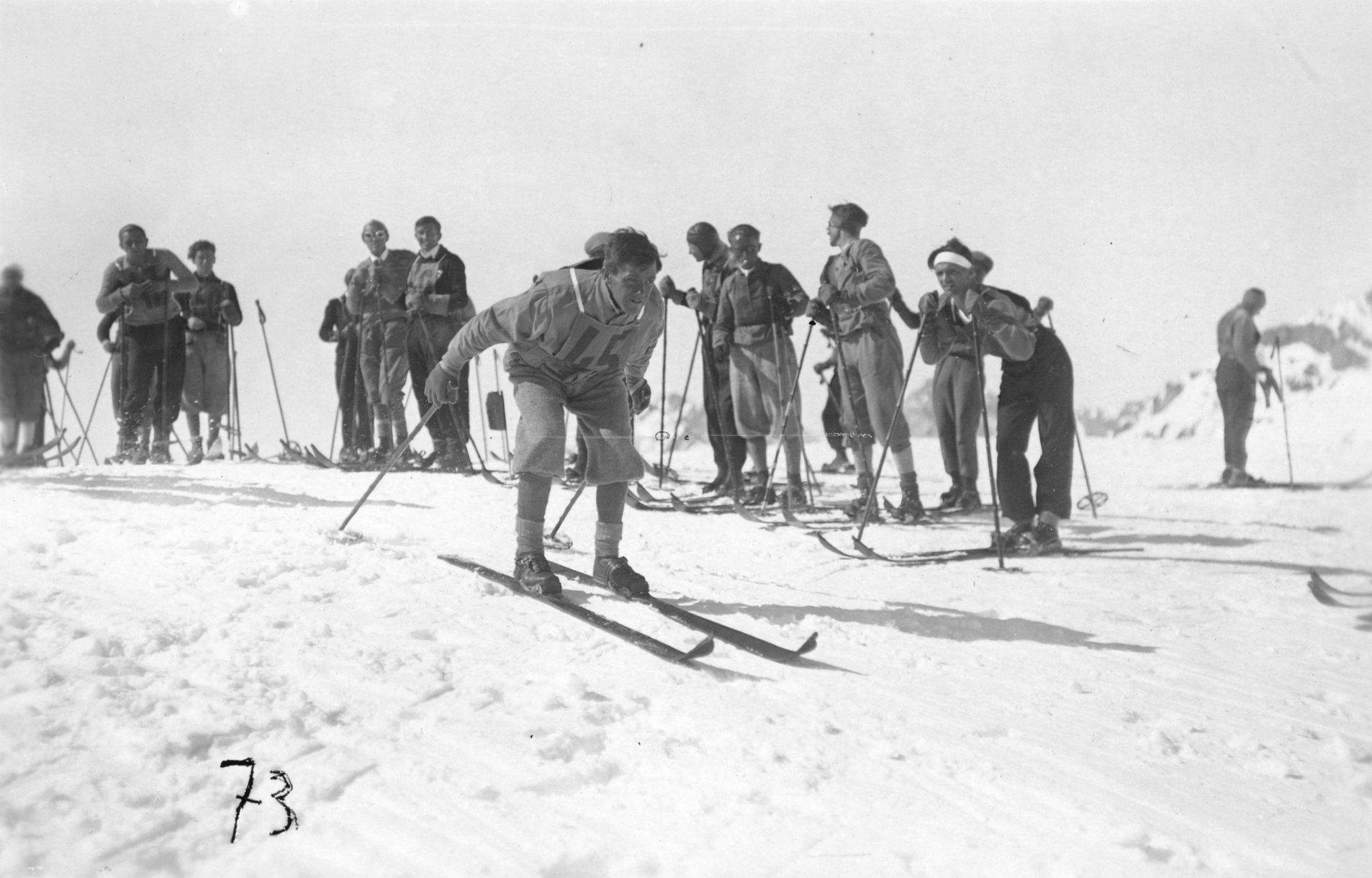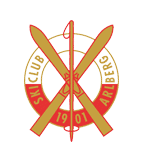History
THE ARLBERG KANDAHAR RACE, A LEGENDARY EVENT.

The History of the
Arlberg Kandahar Race
The club was established as a ski racing club with the purpose of “promoting downhill and slalom racing at a time when Alpine skiing competitions were not recognised internationally”. The driving force behind the Kandahar Ski Club was Sir Arnold Lunn, the man who invented and named the slalom ski race.
In 1927, Lunn came to St. Anton where he met the legendary Hannes Schneider. Sir Arnold Lunn’s visit to St. Anton had far-reaching consequences: before leaving, he set a slalom for the youth of St. Anton and donated a tiny trophy. The race was met with much approval all around. Together with Hannes Schneider, Arnold Lunn decided to organize a new Alpine competition in St. Anton in the year 1928. It involved a downhill and a slalom race, with the outcome determined by combining the competitor’s times for the two races in a single result. Sir Arnold Lunn is credited with creating Alpine ski racing and St. Anton was where he did it. Since Schneider was from the Arlberg Region, and Lunn wanted to memorialize his beloved Kandahar Ski Club, they named the new competition the Arlberg Kandahar.

The Arlberg Kandahar
The Kandahar Ski Club takes its name from the Roberts of Kandahar Challenge Cup, a ski race first held in Crans-Montana for a trophy donated by Field Marshal Earl Frederick Sleigh Roberts of Kandahar. Field Marshal Frederick Sleigh Roberts was a British soldier who was one of the most successful commanders of the 19th century. A war hero, Roberts was created “Earl of Kandahar” for his merits in Afghanistan. Part of the history of skiing, a forerunner of the downhill ski race, the Roberts of Kandahar Cup occurred in Crans-Montana, Switzerland, in 1911, organised by winter sports pioneer Arnold Lunn, with the trophies donated by Lord Roberts. The name Kandahar is still used for the premier races of the World Cup circuit
The AK was Unique in Several Ways
The AK, as ski enthusiast Sir Arnold Lunn once remarked, was “no competition, but primarily a party of chaps who want to have fun.” It introduced the slalom and downhill races and it stressed friendly, individual competition rather than fierce national rivalry. There were no national anthems and the only flag hoisted in the event was that of the host country.
The First Arlberg Kandahar Race
Held on March 03 and 04, 1928, the first Arlberg Kandahar Race on Galzig Mountain turned out to be an international meet with 45 entries, male and female. There was no joking around on the challenging 4.2K racecourse. One year later, the second race drew 130 competitors and the third, held in 1930, 170.
1930: International Recognition of Alpine Ski Racing by FIS
Sir Arnold Lunn’s greatest accomplishment in the skiing field was the acceptance and introduction of downhill skiing and racing, a hard fight against tradition-bound Scandinavians who considered the Nordic tradition of cross-country and jumping the only true tests of skiing. The traditional ski competition at that time consisted of an “Alpine combined” event, a long-distance race and a jumping competition. The Federation was dominated by Scandinavians, Norwegians in particular, who attached no importance to downhill skiing. Lunn had great opposition to overcome, for the Norwegians regarded the slalom as a kind of gymkhana event "suitable for ladies and untrained Englishmen." "It is beneath our dignity," a leading Norwegian skier had remarked, "even to discuss the slalom." But Sir Arnold Lunn, persistent as the proverbial English bulldog, finally prevailed in convincing the tradition-bound International Ski Federation to recognize competition in the slalom as well as in the downhill in 1930.
Arlberg-Kandahar-Race Venues
In 1929 and 1930, the Arlberg-Kandahar Race was held in St. Anton. From 1931, the races were alternately held at St. Anton and Mürren. In 1948, Chamonix, France, became the third host, followed by Sestrière, Italy, in 1951 and Garmisch-Partenkirchen, Germany in 1954. Until the introduction of the World Cup in 1967, the AK races were the most important Alpine ski races besides the Winter Olympics and the World Championships. To this day, the pin emblazoned with AK is synonymous with ski racing celebrity.
In the early 70ies, hosting the event became too expensive for Mürren and Sestrière and they eventually quit.






